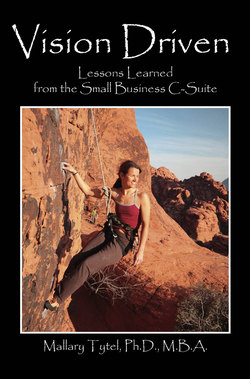Читать книгу Vision Driven: Lessons Learned from the Small Business C-Suite - Mallary JD Tytel - Страница 29
На сайте Литреса книга снята с продажи.
Preparing for the Unknown
Оглавление“Trying to predict the future is like trying to drive down a country road at night with no lights while looking out the back window.”
Peter Drucker
We learn to deal with change however it comes. When crises occur, we face a new paradigm. In the midst of upheaval to the system, there is an event or turning point in the evolution of the organization. The organization may recover and continue along a generally desirable path, or the organization may suffer a serious decline in capabilities and performance – perhaps to the point of no return.
As such, according to noted author and business guru Warren Bennis, we must operate with certain assumptions. Crisis cannot be stopped; it is, after all, part of life and part of doing business and the impact can be far reaching. At a minimum there is disruption of normal functioning. This includes a significant loss of focus. Fear and uncertainty are pervasive and values and priorities are questioned. The result is an undeniable desire to retain and sustain a degree of normalcy. The most important piece, however, is maintaining business continuity.
A crisis-mitigation process gives you options for action and ways to understand what needs to be done. Where is the organization right now and where does it need to go? Working with your entire team, you must divine and then design the future organization, creating the strategy, plans and materials to get you there. Then, do it! Execute your plan, monitor progress at all levels and learn together what you need to do to continuously improve the process.
Part of your capacity then as an organization is to develop resiliency, that ability to recover quickly from change or misfortune. Your keys to success are:
•Confident leadership
•Strategic planning
•Smooth coordination
•Eager cooperation
•Open communication
•Competent execution
•A pinch of luck
Start by returning to and relying on your foundation: your mission, values, culture, diversity, quality and balance. Next, take advantage of your leadership strengths. Believe in the possible, approach others with unconditional positive regard, support an honest ongoing conversation, pay attention and be able to be counted on.
Your actions should reflect your experience and expertise, as well as your resiliency.
•Look to the long-term horizon
•Focus on hopes and dreams
•Think best-case scenario
•Seek, recognize and honor small acts of kindness
•Apply lessons learned
•Provide opportunities for work as a source of community and meaning in people’s lives
•Work to develop and maintain competence, confidence and capacity throughout your organization
Be sure to reinforce decisions and actions that are internally consistent with other parts of the organization and stop those that are not. In addition, recognize each person’s contribution to the planning process and what may be at risk for the organization.
Your mantra should state: “If it can happen, it probably will.” Not everything happens according to the plan. Nothing ever stays the same, either, so preparedness is a continuous process. Involve as many of your team members as possible in the opportunity to go beyond and make a difference.
Sometimes you only get one chance to do it right. Take the time and energy to build personal relationships in order to work and play well with others. As we’ve all learned working and playing well with others takes practice.
So, if your organization doesn’t work well now ...?
